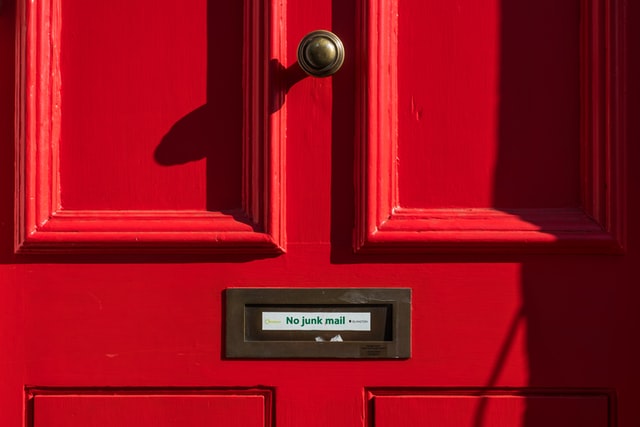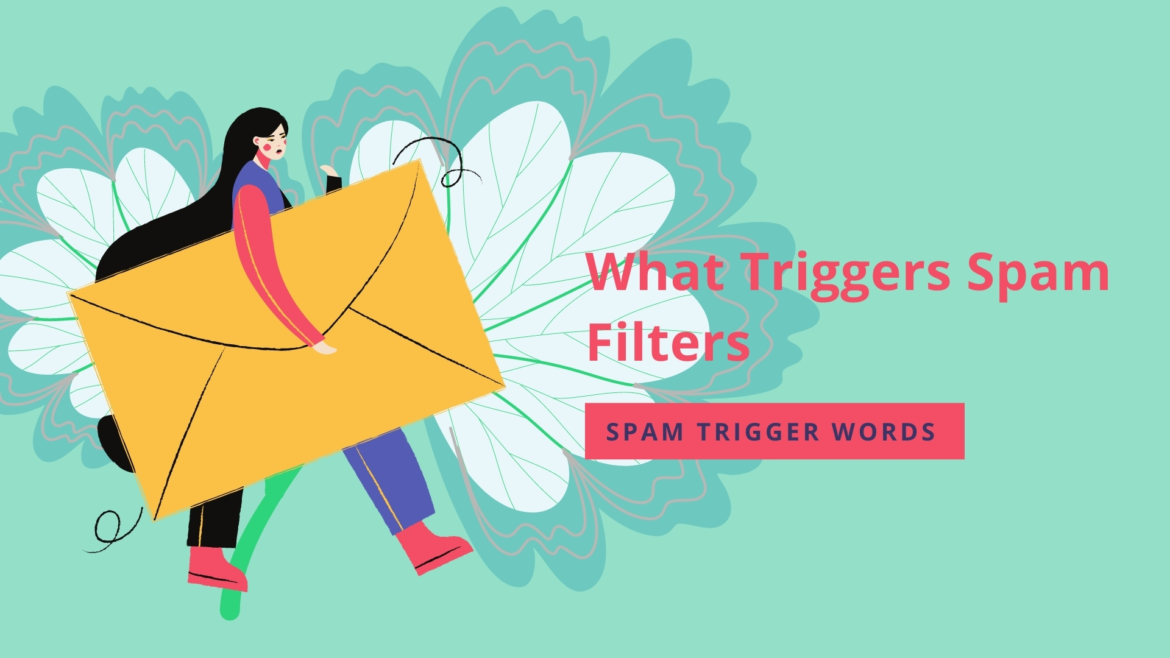There are few things worse than spending time writing an email, finding or creating graphics for it, choosing a specific distribution list, and sending it off—only to find out it never made it to your intended recipients because you used spam words.
The surge of spam email dates back to the beginning of commercialized internet in the middle of the 1990s. But it was 12 years prior, before spam email was sent in droves, that the very first spam email was sent on May 1, 1978, by a man named Gary Thuerk. Thuerk was a marketer for a company called Digital Equipment Corporation, and the email was an advertisement for a presentation on their DECSYSTEM-20 products. Dave Rand and Paul Vixie, both software engineers, started one of the first efforts to combat spam. They started a blacklist of IP addresses that either sent spam or committed similar actions; this list, the Real-time Blackhole List, was soon distributed to network managers to block mail from specific sources.
As spam email became more of an issue in the early 2000s, spam filters appeared, such as SpamAssassin, which first became available on April 20, 2001. Today, there are a variety of spam filters available, and many email providers (such as Gmail and Outlook) provide some type of spam filter. That’s why when you are crafting any email, you need to be mindful of spam trigger words. Avoiding including spam words in email marketing or risk all your hard work being lost to the spam filter.
What is Spam Email?
To write effective emails you need to understand what triggers spam filters. But to understand that, we need to know exactly what spam is.
Spam is defined by Merriam-Webster as the “unsolicited usually commercial messages (such as e-mails, text messages, or Internet postings) sent to a large number of recipients or posted in a large number of places.”
While all spam email is annoying, some spam emails may also be malicious: They can attempt to scam recipients or they can contain links or documents that contain viruses or malware that can infect a computer and allow access to a person’s computer.
Not all spam emails look the same. There are different types of spam email, including:
- Advertisements
- Chain letters
- Hoaxes
- Malware warnings
- Money scams
- Spoofed emails
- Advertisement Spam
The one distinction about advertisement spam that needs to be made is its difference from “cold emailing.” Both entail sending an unsolicited email to a recipient, and while it is legal to send out an unsolicited commercial email, there are some rules that you need to follow. The difference between cold emailing and spam in terms of advertisements is that advertisement spam email does not adhere to elements of CAN-SPAM (a United States law regarding commercial messages). Advertisement spam could contain a legitimate offer, but some are sent with malicious intent.
Chain Letter Spam
“Share this blog post by email or you’ll have three years of bad luck.”
“Forward this email to at least three friends or a demon will haunt you!”
Chain letters are outrageous and feed on superstition to get you to forward it to as many people as you can. It usually makes unfounded claims that you or someone you care about will suffer harm or misfortunate. Other chain letters are lengthy, telling thrilling stories and encouraging you to pass them on as a warning.
Hoax Spam
Like advertisement spam, a hoax spam email may offer a product, but these products often come with too-good-to-be-true claims and unfounded promises. The way to spot a hoax email is if it is offering some grand result in an insufficient amount of time, such as earning $50,000 in a month or losing 10 pounds in just one week.
Malware Warning Spam
Sometimes you may get an email alerting you that your firewall or other security system on your computer is affected in some way. The email also includes information about a solution that you can use, but in order to get it you need to provide some information (such as your credit card) or download an attachment sent with the email. These are often attempts to place malware on your device.
Money Scams
Money scams are spam emails that try to solicit money from a recipient. The reasons made up to steal the money vary, but it seems there is no end to the “creative” ways people will try to scam others. Types of money scams include:
- Getting an email from an unknown person claiming to know a relative of yours that is in dire financial trouble, such as being stuck in another country with no money
- Telling the recipient that they will receive a large fortune, but they first need to wire transfer money to take care of the paperwork
- “Fundraising” for any notable causes but without the intention of ever donating the money collected
Spoofed Emails
Netflix, Amazon, Apple, and PayPal are big targets for spoofed emails to the point that they all have a dedicated email address and team to which you can report and avoid email phishing attempts from spoofed emails. A spoofed email is an email that appears to be sent from one entity but, upon further inspection, is not. Typically, these types of emails are riddled with poor grammar.
What Triggers Spam Filters?
Now that we know what type of spam email exists, we need to understand what triggers spam filters. There are different criteria that a spam filter takes into consideration (through an algorithm), and it assigns each email a number value that indicates its probability of being spam. Sometimes legitimate email is marked as spam email and vice versa; this is because spam filters assigned a legitimate email as having a high probability of being a spam email. That’s why it is important for markets to know the criteria to which their emails will be subjected and avoid meeting that criteria. In 2020 this is a cornerstone of running successful cold campaigns.

Not all spam filters will look at the same criteria. Here are four possible criteria that a spam filter may check.
Content
When looking at content, a filter will look for spam keywords, which are words or word phrases that often appear in spam emails. Spam words can be grouped into categories like call-to-action, financial, ecommerce, legal, health, or special offers; so, if you’re in the health industry, you’ll want to make sure you know what the common health-related spam words are you so can avoid including them in your email’s content.
Header
Another criterion is the header of the email. This is not the subject line (which would fall under content) but the source from which the email was sent. It is sometimes from an email address with a variety of characters and numbers but no definable words. The domain (the @______.com part) may also be unfamiliar or a mix of characters and numbers. Legitimate email, especially for commercial purposes, will come from email addresses with a known domain name and is otherwise a few words.
Blocklist
A spam filter may rely on a “blocklist,” which is a compilation of IP addresses that have been deemed suspicious. Anything that is sent from an IP address on the blocklist will be filtered as spam.
Rules-Based
If you want to filter out email from a specific sender, you can set up a rule-based filter that automatically flags email from the sender as spam. Similarly, you can set up rules that filter spam words. If the words appear in either the subject line or in the body of the email, the email will be flagged as spam and filtered out.
Spam Trigger Words
If you conduct a search for “email spam trigger words” or “spam filter trigger words,” you may be surprised at the results you see. Some of these words may appear harmless but can result in your email being marked as spam.
The best step you can take is to first write your email and then do a manual review of what you wrote to see if it contains any words or word phrases that may be spam filter words. There are also tools you can use to check your email for you. One service, Mail-Tester, has you send your email to a specific email address, and then it returns a score for your email.
If you find that you have some spam words, there are ways to rework the content to avoid these phrases. Sometimes a phrase cannot be rewritten and should be avoided entirely. Here are five examples of common spam phrases and some suggestions to rework them:
| Spam Phrase | Suggestion |
| Full refund | We provide refunds at full value. |
| Removes wrinkles | May help improve the appearance of wrinkles |
| 0% risk | Minimal risk |
| Limited time offer | Offer valid until… |
| Sign up free today | Sign Up |
Note that many of the rewrites are longer than the spam phrase. You may need to provide more context instead of relying on “short and sweet” phrases.
Another consideration is that sometimes words that trigger the spam filter are unavoidable. If you look at several spam lists, you’ll see words such as “refund,” “vacation,” “offer,” “home,” and “clearance.” These words can be used maliciously, but they can also be used by companies like Southwest that provide flight offers so you can go on vacation or a home goods company having a clearance on home décor.
While there are steps you can take to avoid the spam filter, your email may still get flagged. But if your basics are covered then the chances are much lower that it’ll happen to your company.


